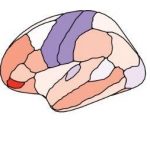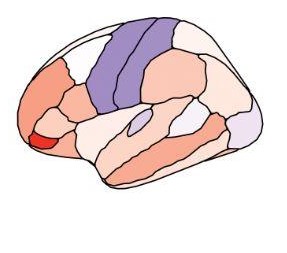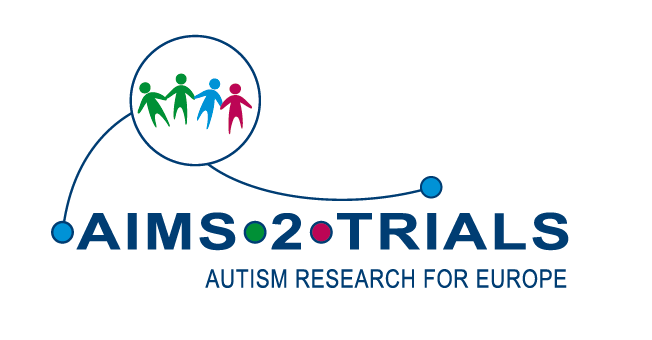 Scientists still do not know what underpins the core behavioural characteristics of autism, for example repetitive behaviours. One well-supported theory suggests that these behaviours stem from an imbalance between neurotransmitters (the ’chemical messengers’ in the brain). Understanding the mechanisms of this imbalance is complex. AIMS-2-TRIALS researchers have recently used an innovative approach, combining different analysis techniques in new ways, to investigate the processes surrounding this imbalance and to improve our understanding of autism.
Scientists still do not know what underpins the core behavioural characteristics of autism, for example repetitive behaviours. One well-supported theory suggests that these behaviours stem from an imbalance between neurotransmitters (the ’chemical messengers’ in the brain). Understanding the mechanisms of this imbalance is complex. AIMS-2-TRIALS researchers have recently used an innovative approach, combining different analysis techniques in new ways, to investigate the processes surrounding this imbalance and to improve our understanding of autism.
The Excitatory / Inhibitory imbalance
Neurotransmitters are chemicals released by nerve cells to send signals to each other. These signals can be either:
- excitatory (stimulate other nerve cells to continue the progression of a signal)
- inhibitory (block the signalling between nerve cells)
- modulatory (adjust how other neurotransmitters function).
The balance between excitatory (E) and inhibitory (I) neurotransmitter activity is crucial for brain functioning. E/I imbalance is thought to underlie autism, along with other conditions such as epilepsy and schizophrenia. This is known as the E/I imbalance hypothesis.
Whilst this hypothesis has been widely studied, we do not yet know how this imbalance underlies characteristics of autism. For example, an imbalance could be due to either ’too much’ or ’too little’ excitation or inhibition. It could also be that imbalances in different parts of the brain are underlying different autism characteristics.
To investigate this, researchers typically look at the most common neurotransmitters involved in these E/I processes. Glutamate is the most common excitatory neurotransmitter and is involved in almost every excitatory process in the brain. GABA (Gamma-Aminobutyric Acid) is the most abundant inhibitory neurotransmitter.
AIMS-2-TRIALS researchers investigate E/I via a new approach
Genes are stretches of DNA that code for proteins, which are large molecules that carry out lots of functions in the body. There are several genes that code for proteins involved in the glutamate and GABA processes in the brain. For the first time, the scientists combined different analysis methods to investigate how glutamate and GABA genes relate to structural differences in the brain and the behavioural characteristics of autism.
The researchers analysed data from the AIMS-2-TRIALS Longitudinal European Autism Project (LEAP), which is currently the world’s largest study into the diversity of autism. This study used information from almost 640 people aged 6-30 years. The information includes genetic data and measures of cortical thickness (i.e. the thickness of the cerebral cortex, a folded sheet of neurons on the outer surface of the brain). Cortical thickness is measured using an MRI scan (Magnetic Resonance Imaging). The data also includes measures of the behavioural characteristics of autism such as, repetitive behaviours, social responsiveness and sensory processing.
Taking a novel approach, the researchers analysed the data in two main ways:
- Linking the associations between genetic variation in the glutamate and GABA genes to core autistic behaviours
- Investigating whether differences in gene expression (the process of coding for glutamate and GABA genes) is associated with differences in brain structure between autistic and non-autistic people.
The findings
The researchers found differences in how the glutamate and GABA genes were linked to autistic characteristics. The genetic variation of the glutamate genes were linked to the broader characteristics of autism (using ADI-R and ADOS-2 scores, which are interviews used to diagnose autism). However, this was not the case for the GABA genes.
The scientists did find a link between GABA genetic variation and sensory processing, although this was a weaker association. Previous studies have also found that concentrations of GABA in the brain were linked to sensory processing.
The second analysis tested whether the expression of glutamate and GABA genes were associated with differences in cortical thickness (between autistic and non-autistic people) across brain regions. The study did find that higher levels of gene expression (of both glutamate and GABA genes) were associated with larger differences in cortical thickness. However, the results were different depending on the ages of the participants. In adolescence, this association suggests larger cortical thickness in non-autistic people, whereas in adults, it suggests larger cortical thickness in autistic people.
These combined findings show that glutamate and GABA genes are linked to both structural and behavioural characteristics of autism, but in different ways. They also suggest that the genes have different effects across different ages.
How is this research important to autistic people?
Uncovering links between brain features, and how those relate to behaviours, improves scientific understanding of the mechanisms underlying autism. These connections are especially useful for studies aimed at identifying tailored medication for autistic people who may want support with various challenges.
There are medications already available that affect glutamate and GABA concentrations and there have been studies investigating whether these medications can help support autistic people. However, quite a few of these trials have not shown significant effects. This could be because autism is very diverse, and the medications affect people differently. Also, this study shows that glutamate and GABA seem to have different effects at different ages, meaning that medication could have different effects depending on the age of the person taking it.
This research may also be a step towards scientists identifying future behavioural or biological markers that indicate how autistic people may develop over time. This may eventually help clinicians to understand what support might be more effective for each person.
What’s next?
It is important to note that genetic variation and expression of the glutamate and GABA genes may not be directly translated to the concentrations of these neurotransmitters in the brain. So the next step is to measure the concentrations of glutamate and GABA in the brain. To do this, scientists use a non-invasive measure called Magnetic Resonance Spectroscopy, which can be added to a standard MRI scan.
In LEAP and PIP (the Preschool Imaging Project), the researchers are now measuring glutamate and GABA concentrations in certain brain regions: the ACC (anterior cingulate cortex) and thalamus. These brain regions are known to be associated with the brain biology of autism. This will enable the scientists to also investigate how concentrations of glutamate and GABA link to the measures that were investigated in this study, which will provide an even more detailed understanding of how E/I imbalance links to differences in brain structure and behavioural characteristics of autism.
Reference: Hollestein, V., Poelmans, G., Forde, N.J., Beckmann, C.F. et al. (2021). Excitatory/inhibitory imbalance in autism: the role of glutamate and GABA gene-sets in symptoms and cortical brain structure. Translational Psychiatry, volume 13, Article number: 18.








